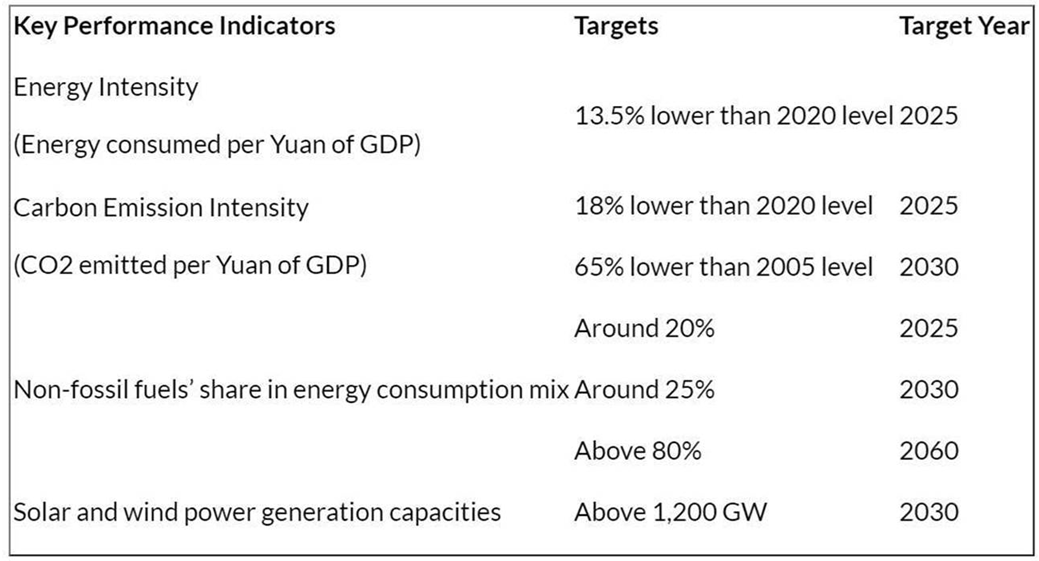

China will work toward having 80% of its total energy mix from non-fossil fuel sources by 2060 and 1,200 GW of solar and wind generation capacities by 2030, according to a high-level policy framework for achieving peak carbon and carbon neutrality, published by the State Council, the country’s highest executive body, on Oct. 24.
This is the first time China has unveiled the 80% non-fossil fuel target, which implies a renewables-dominated future electricity network that will require a complete overhaul of its existing planning, storage, and distribution system based on coal- and gas-fired generation.
China’s new commitments will influence negotiations at the upcoming UN Climate Change Conference in Glasgow, and also form the basis of a domestic roadmap for its climate goals.
The policy emphasized that China’s right to economic development must be protected, and the bottom line of common but differentiated responsibilities for developed and developing countries must be guaranteed, which has been a hard negotiating point in previous conferences.
The key targets were proposed in the policy framework covering energy and emission intensities, energy consumption mix, and renewable installation capacities.
TABLE: Key Targets in China’s Carbon Peaking and Neutrality Policy Framework
Tightened controls over emission-intensive sectors
The policy framework said existing dual controls over total energy consumption and energy intensity must be strengthened and enforced, and besides CO2 emissions, other greenhouse gas emissions should also be curbed.
China will launch specific carbon peaking action plans for key sectors including steel, non-ferrous metals, petrochemical, building, building materials and transportation, and blind development of energy-intensive and emission-intensive projects will be curbed.
In particular, coal-fired power generation, petrochemicals and chemical processing of coal will be targeted, including tightening capacity, upgrading the existing coal fleet for energy savings, and gradually eliminating non-centralized coal combustion by households, the policy said, adding that greenfield and brownfield refinery projects would also be curtailed.
In the transportation sector, electrification and hydrogen adoption will be promoted, the energy efficiency benchmarks for petroleum-powered vehicles and ships will be raised and phasing out of old and inefficient units will be accelerated. These steps are expected to further impact conventional fuel markets.
Twin-track approach
The State Council’s policy framework proposed a two-track approach comprising policy measures and the use of market forces to achieve climate goals, such as green financing, power market reform, and carbon market development.
For the power sector, the government needs to accelerate market reforms, while ensuring electricity prices can be reasonably differentiated for different types of commercial and household users and at different times.
The policy emphasized that electricity subsidies shall never be provided to energy-intensive and emission-intensive sectors.
In the carbon market, the government needs to complete related legislations, as well as build up carbon accounting, measurement, and supervision capabilities.
Carbon trading should cover more sectors and offer more products, and “a binding carbon pricing mechanism” and “a mature emission allowance allocation system” should be established, the policy said.
The policy framework pointed out that power trading and carbon markets should be developed in tandem and comprehensive policies governing carbon emission disclosures for companies and financial institutions should be implemented.
It advocated tax incentives for vehicles and ships adopting clean fuels, and support for local government authorities to adopt fiscal policies targeting local low-carbon industries.
The policy framework also proposed the greening of the Belt and Road Initiative under which developing countries will be supported to adopt clean energy resources and adapt to climate change, while promoting China’s low-carbon technologies and products to the global market.
Earlier this year, Beijing said it would develop a ‘1+N’ regime to facilitate the realization of 2030 carbon peaking and 2060 carbon neutrality targets, where ‘1’ refers to the newly launched high-level policy framework, and ‘N’ refers to a set of supporting instruments that will be launched subsequently, such as a carbon peaking action plan, net zero roadmap, and detailed sectoral plans.
State Council said the new policy commitments are based on five guiding principles — considering the differentiated economic conditions of individual provinces, prioritizing energy savings, utilizing both government policies and market forces, promoting advanced technologies to the global market, and mitigating the impacts on energy security and people’s daily lives.
Source: Platts